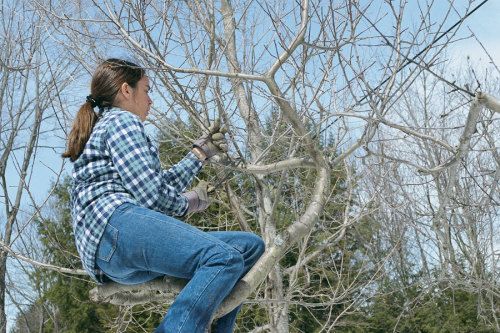
Pruning offers all kinds of opportunity. Take that old apple tree in the yard. It’s been there as long as I can remember, but just hasn’t produced much fruit lately. If I prune it every year for two or three years, I can bring that tree back to a fruiting state, and make it a more attractive part of the landscape.
An apple tree can remain healthy and productive for 50 years or more, but it needs proper care, especially correct pruning. Neglected, an apple tree loses vigor and stops producing fruit. By that point, it’s usually as overgrown and unattractive as a tangle of witch’s hair. But if you’re lucky enough to have an old tree, take steps to restore it.
| More on growing apples in the backyard orchard, plus links to apple recipes… | |
Pruning is a great excuse to get outside. It just so happens that the best time to prune apple trees is late winter or early spring, coinciding with seasonal light deprivation and cabin fever. Grab your tools, stretch your gardening muscles, and make yourself and the tree feel better. It’s easier to assess the tree this time of year than when it’s covered with blooms, leaves, or apples. And it’s important to prune while the tree is dormant. A tree pruned before it is fully dormant is more susceptible to winter damage. So get your pruning done after dormancy sets in, but before growth starts in the spring.
Take stock, starting at the top
Put sentimentality aside and look over the tree carefully, starting at the top. First, find the dead or diseased branches. The bark may appear grayish or crinkled, and the buds won’t be swelling, as they do in late winter on healthy branches. A few dead branches are to be expected, but if half the tree seems to be dead, it’s too far gone to save.
Look carefully at the base of the tree. If the bark has been seriously damaged by mice or an errant weed whacker, or if sections of bark are falling off, then the flow of nutrients has been substantially reduced, weakening the tree.
Look for new growth at the ends of the branches. Starting from the tip, follow the smooth bark to a ring of lines; this is the new growth. If there is none evident and there are other signs of decline, it’s unlikely you can save the tree. Cut it up for firewood and start over with a youngster.
Begin with the end in mind
Apple trees bear fruit on stubby spurs that sprout from branches at least two years old. Though older spurs will produce fruit for some time, to keep trees bearing vigorously, new spurs must continue to form. Terminal buds contain auxin, a hormone that inhibits the growth of lateral buds, so when terminal buds are pruned away, lateral buds are more likely to sprout. In the second year, these new shoots develop flowers, becoming the tree’s new fruiting wood.
An ideally shaped apple tree has a strong central leader—a main limb that grows straight up the center of the tree. The lateral limbs—the scaffold of the tree—are well spaced, and the upper branches are shorter than the lower ones. This allows light and air to reach all the branches and fruit.
Apple trees left to their own devices rarely grow this way. Limbs grow helter-skelter, crossing each other, blocking light, damaging each other in windy conditions. Your aim is to bring your old tree closer to the ideal.
Make that old tree fruitful again
You’ll need a couple of sharp tools, like a fine-toothed saw and a good pair of hand clippers. Gloves will help protect your hands. You may need a lightweight chainsaw and a ladder for older trees. If you have more than just a few trees, it’s worth buying a pole pruner (the type that has clippers on top of a long pole). It is especially handy for thinning out high branches on older trees.
Make sure all your pruning tools are clean and sharp because dull tools make jagged cuts that heal poorly, inviting disease. Use steel wool and a bleach and water solution (with approximately 10% bleach) to thoroughly remove rust, dirt, and any viruses or bacteria from saw blades and clippers.
First, cut out all the dead or diseased branches. Look for blackened or unusually colored patches of bark. Crinkled or peeling bark, especially next to dead portions, can be signs of disease. Many fruit tree diseases enter a tree through a wound at a broken branch, then spread into the trunk, seriously weakening or killing the tree.
Cut back to healthy wood and always make smooth cuts. Make your cuts at outward growing branches or close to the collar where the branch is connected to the trunk so you don’t leave a stub to rot and attract disease. Hold onto branches when you’re cutting them off so they don’t fall and rip the bark.
Larger limbs need to be undercut first before completing the cut from the top of the branch. This will keep the branch from tearing or from pinching the saw.
Identify and follow the leader after the dead and diseased limbs have been removed. Walk all the way around the tree and look at its shape. Look for any branches competing with the central leader. If your tree has developed multiple leaders over the years, start by removing one or two. Cut out a maximum of three large limbs a year to avoid shocking the tree. Save healthy branches that are well placed.
If an older standard-size tree was properly pruned at one time or if there is upright growth in the center of the tree, you can develop a central leader over two or three years. Smaller trees, such as semi-dwarfs, which top out at 12 ft. to 18 ft., are much better candidates for the central leader system because dramatic changes can be made without drastic cuts. A central leader shape can usually be developed in the first season of pruning and later improved upon.
Look for strong, upright branches growing from lateral branches. These little trees within the tree should always be removed. Start by making cuts at the top of the tree. Work downward so falling wood doesn’t break limbs you’ve already pruned.
You’ll probably need to bring in the top of the tree by trimming back the upper branches. After making the bigger cuts, thin out limbs that are shading, crossing, or crowding the ones you’ve chosen to save. You want the tree to end up looking open; each branch should have its own space to grow. You should also remove limbs less than 2 ft. above the ground. Apples growing on limbs that are too low will hang onto the ground once the fruit develops.
Older trees are often too tall and need to be lowered to be manageable. Before you start to prune a very tall apple tree, lean your ladder against the trunk and climb up to take a closer look at what you have to work with. Big branches in the treetop may look strong from the ground, but make sure before you put your weight on them.
When I’m working on older standard trees, I do as much cutting as I can from the ladder set against the trunk, carefully climbing out on limbs I’ve determined to be safe to trim off larger branches, then cleaning out smaller, brushy growth with my pole pruner. Remove large branches by cutting them off in sections to avoid injuring yourself.
The Zen of pruning
You can’t correct all of a tree’s problems at one time. A good general rule of thumb is not to cut out more than one-third of the tree in one year. You may do more harm than good if you prune too drastically. But you should see a big improvement in your tree’s appearance and vigor in its first growing season after pruning. Eventually this will mean bigger crops of larger fruit, less disease, and a sturdier tree.
Pruning is a gradual and continuous process that requires the ability to visualize the effects of the cuts in the years that follow. A heavy pruning will cause thick new growth. This is future fruiting wood, so save the better-placed new shoots, while thinning out the rest. Allowing new shoots to develop into replacement limbs will revitalize the tree by replacing older, weaker wood with new, vigorous wood.
Train new shoots that come off the leader so the crotch angles are about 45°. The narrower the angle of the crotch, the more likely the branch will be weak and unable to bear the weight of the fruit without splitting off from the tree. Use clothespins as spreaders for small branches, wedging the clothespins in the crotch. This pressure will widen the crotch angles, strengthening the limb, and encouraging earlier fruit production.
Once an older tree is revived, it may not require annual attention. But take a look at it every winter, keeping the desired shape in mind and making follow-up cuts if necessary. Most years, you should need to thin only new branches to maintain the tree’s shape, and to cut off any branches damaged in winter storms. The tree will reward your efforts with years of beauty and fruit.
An apple a day
Does an apple a day really keep the doctor away? The author thinks so, and for good reason. Within the apple resides a batch of vitamins and a significant amount of fiber, soluble and insoluble. Soluble fiber helps reduce levels of cholesterol by binding to cholesterol molecules and then going its merry way. This fiber may also be important in lowering the risk of breast and prostate cancer.
The insoluble fiber is not digested but keeps you going on your merry way. It can also lower the risk of colon cancer. To top it off, the American Dental Association suggests apples help clean the teeth of tartar. What more could you ask of a fruit?
by Elaine Morley
April 1997
from issue #8
Fine Gardening Recommended Products

A.M. Leonard Deluxe Soil Knife & Leather Sheath Combo
Fine Gardening receives a commission for items purchased through links on this site, including Amazon Associates and other affiliate advertising programs.
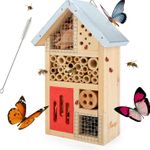
Niteangel Natural Wooden Insect Hotel, Garden Insect House for Ladybugs, lacewings, Butterfly, Bee, Bug
Fine Gardening receives a commission for items purchased through links on this site, including Amazon Associates and other affiliate advertising programs.
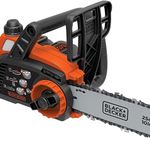
BLACK+DECKER 20V MAX* Cordless Chainsaw, 10-Inch, Tool Only (LCS1020B)
Fine Gardening receives a commission for items purchased through links on this site, including Amazon Associates and other affiliate advertising programs.

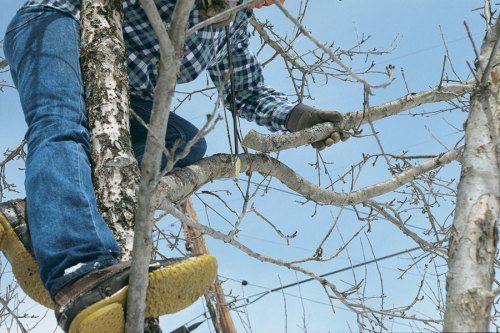
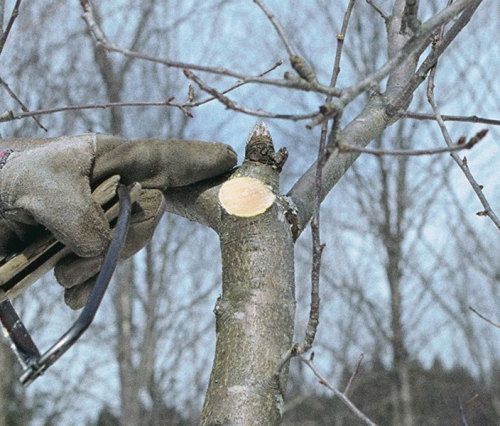
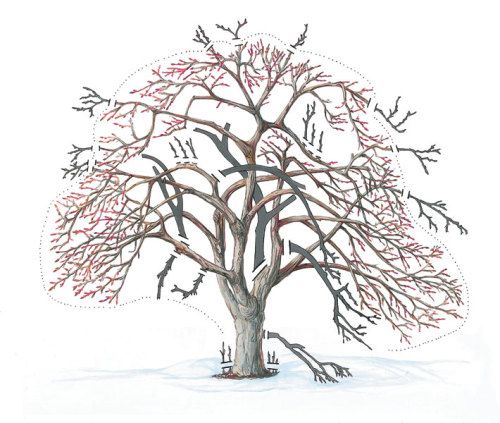
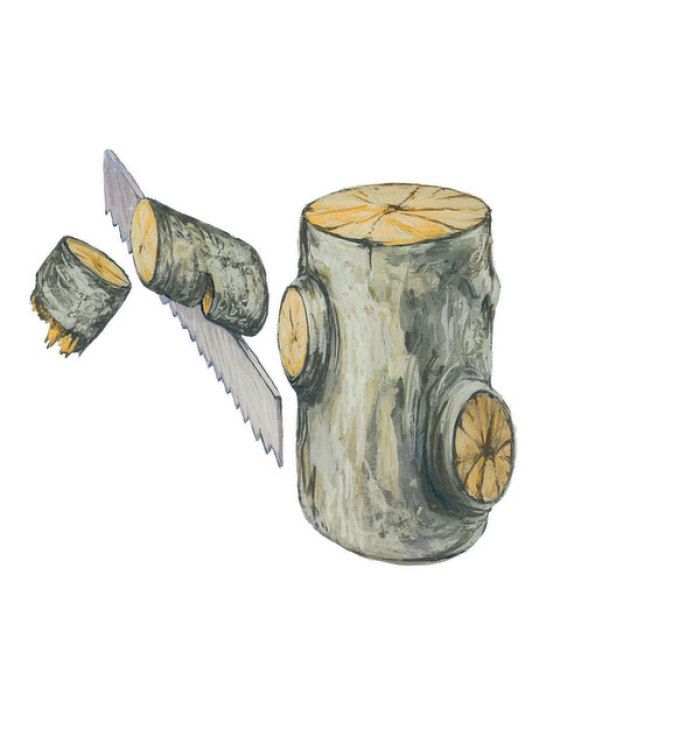

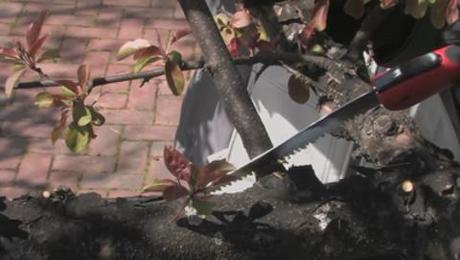















Comments
Log in or create an account to post a comment.
Sign up Log in